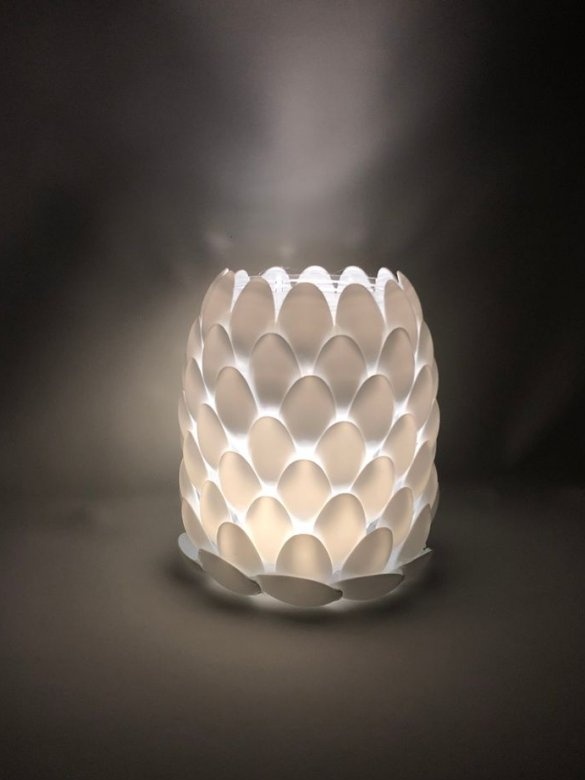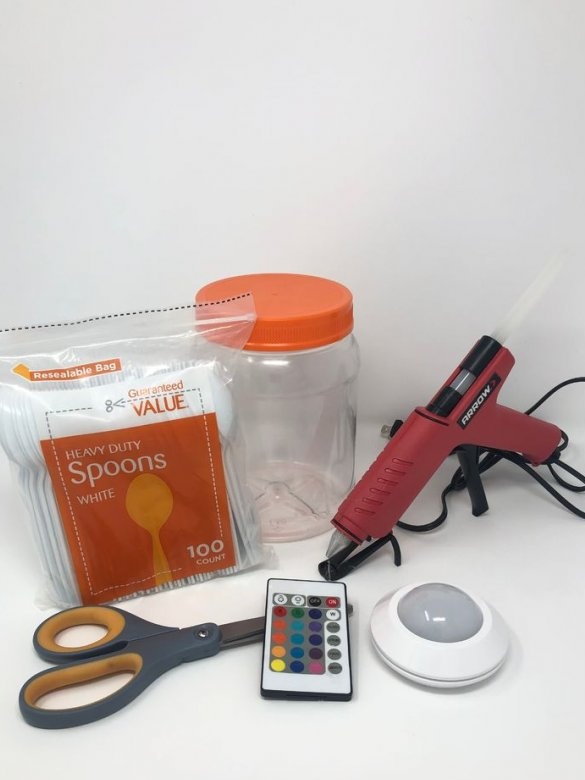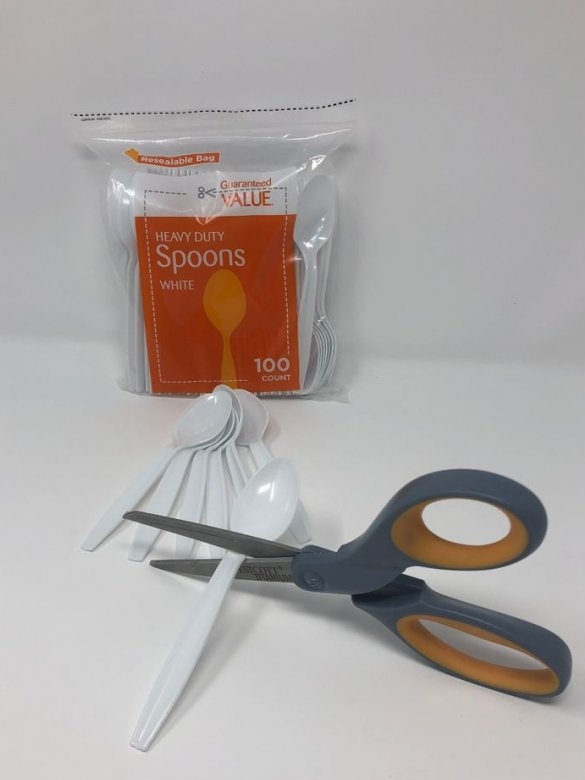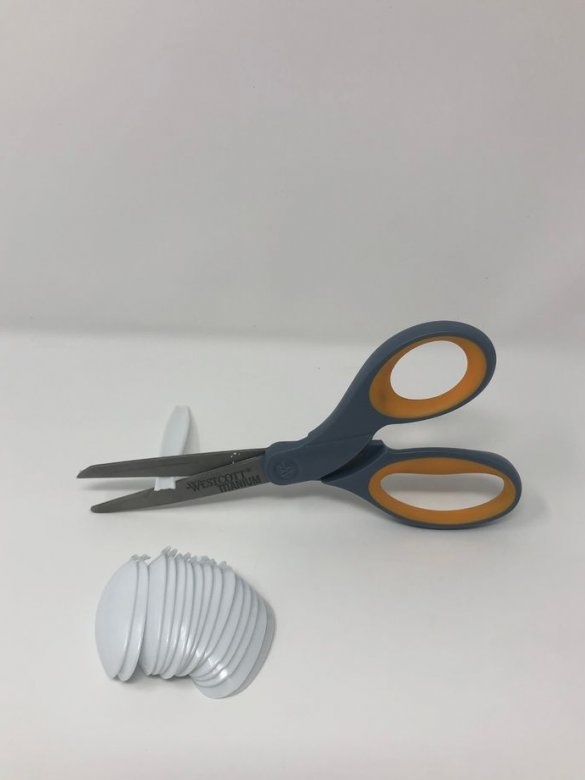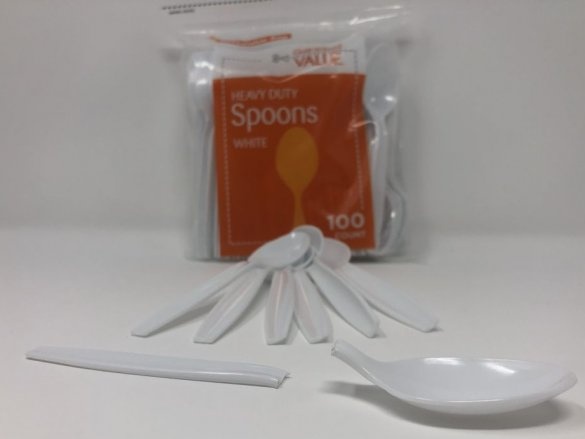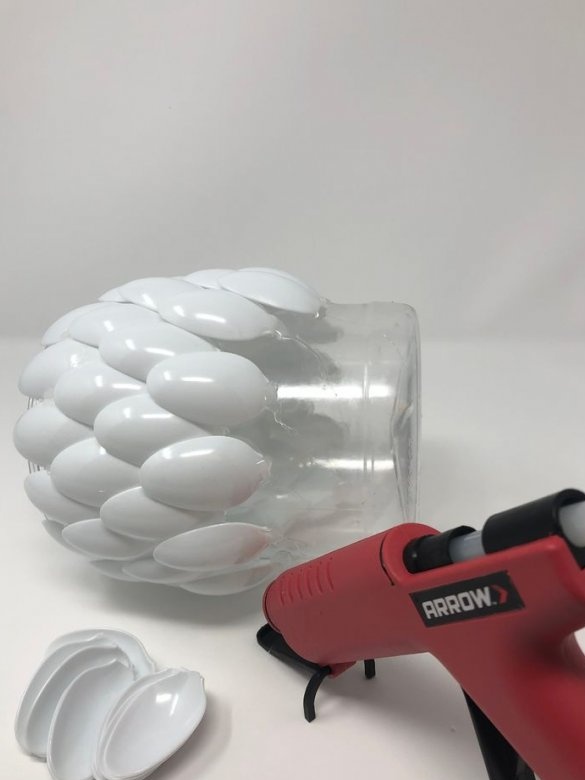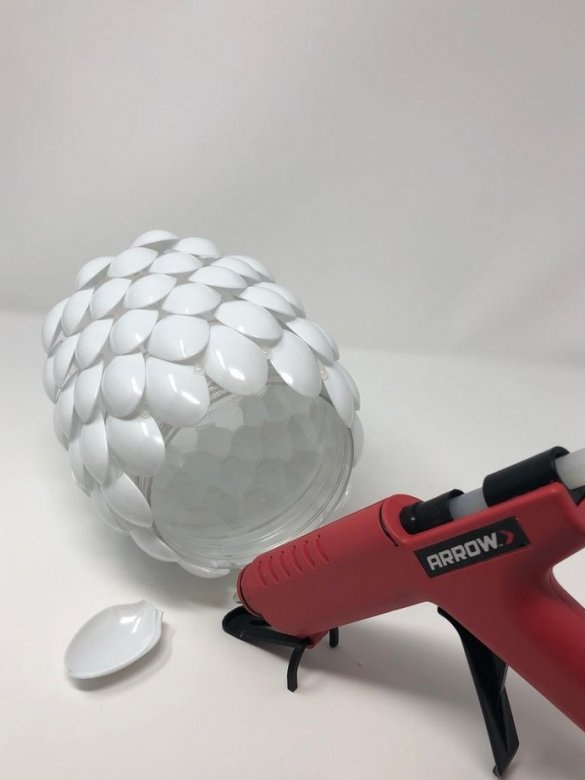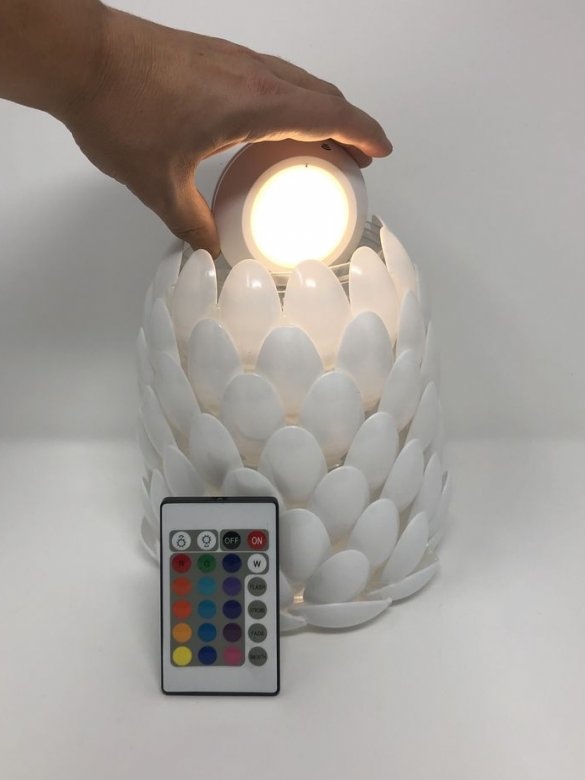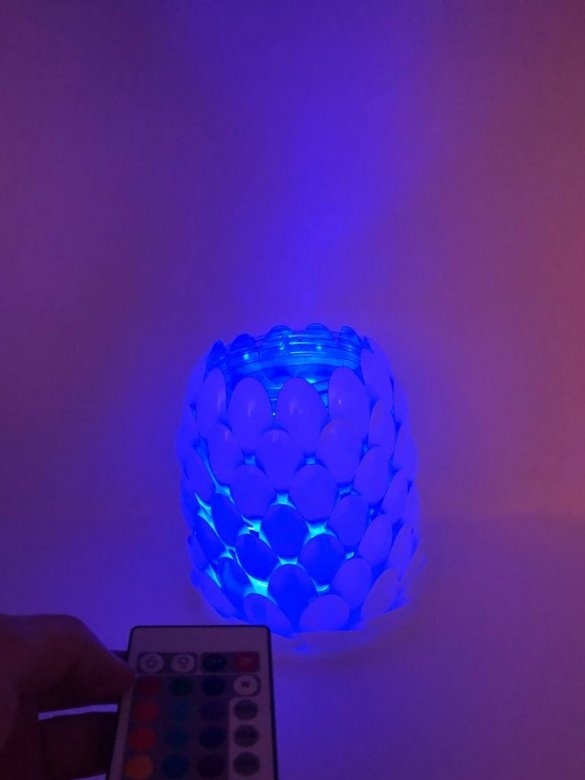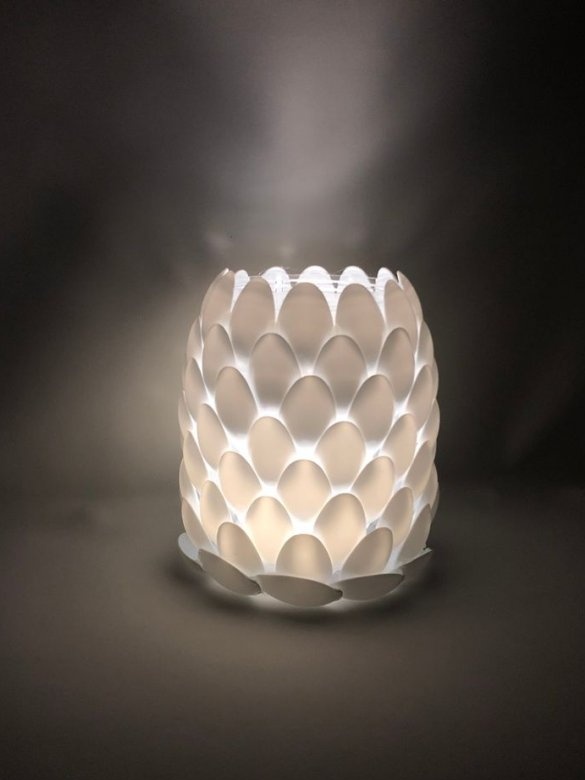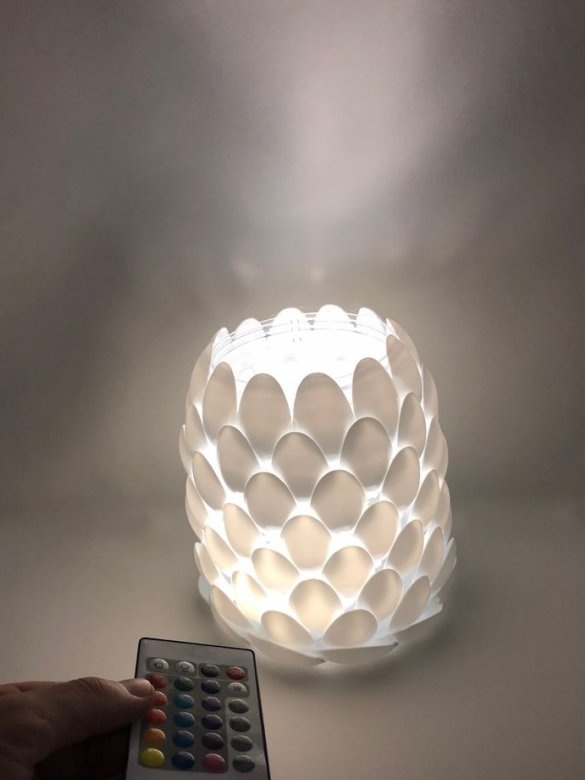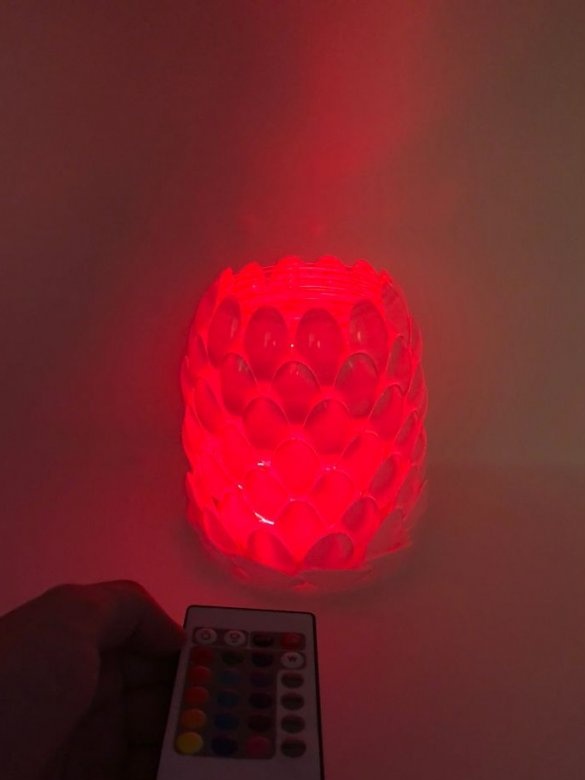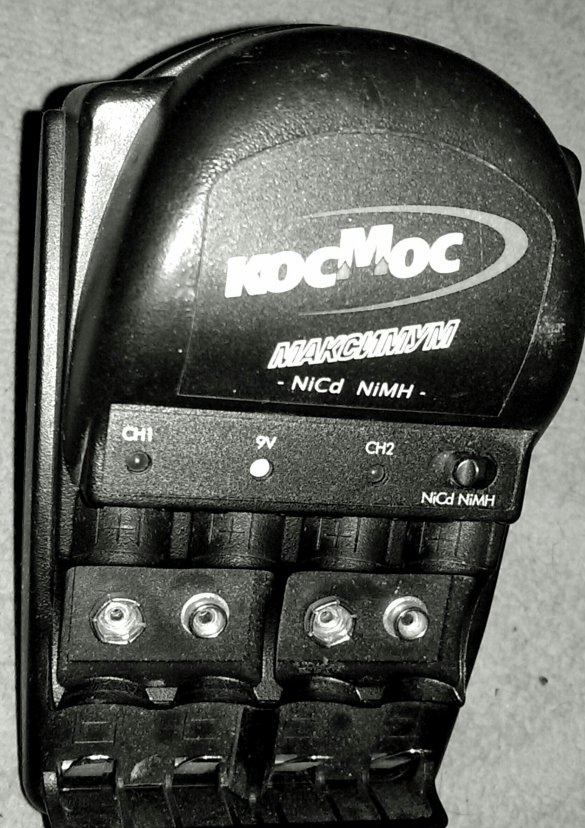Back in 2017, the local user under the name Lacan talked about an interesting project from the FunnyBottle website - a chandelier with a plafond from a plastic bottle covered with plastic spoons. Now you can make in the same style with this chandelier and a table lamp of a similar design, developed by Instructables under the nickname BrendanPaules. Unlike the first homemade, here the light source is not a compact fluorescent lamp (CFL), but an LED RGB lamp with a remote control. Matte spoons not only release the light from the lamp, but also pass the infrared rays from the remote control, weakening them not so much. Therefore, there are no problems with management.
The master used a plastic jar with a lid as the basis for the ceiling, but the lower part of the two-liter bottle is also suitable. To connect the spoons with a can or bottle, you will need a glue gun with rods to it, and to separate the handles from the spoons, the master takes scissors.
Just by biting the pens from the spoons, the master begins. If the plastic is too fragile, cracking from scissors, you can saw off the handles with a small hacksaw. Even the most flimsy one from Fix Price will do. An interesting story from the reviews site is connected with such a hacksaw. One woman bought a set of two hacksaws in this store and started sawing a branch 30 mm in diameter in the garden. She was very surprised that the canvas, designed to work with plywood with a thickness of about 5 mm, burst, and began to write another review about what supposedly is a bad Fix Price.
If you stick the handles from the spoons to any flexible or solid base, you can get a small massage mat. The master himself begins to glue the spoons to the outer surface of the can:
Itself does not notice how it reaches the middle:
Here is the whole jar and pasted:
The master places an RGB LED lamp inside:
Then he tries to control it from the remote control. As mentioned above, matte spoons do not really and strongly weaken the infrared rays, and the lamp confidently responds to commands. Contribute to this and small gaps between the spoons.
Some of these fixtures are powered by an odd number of AA or AAA elements, for example, three. When replacing them with batteries of the same format, it becomes necessary to charge them in pairs, which not all storage devices are capable of. The following photo shows an “advanced” charger that can charge from one to four AA or AAA batteries, or from one to two Krona batteries, independently of each other. If any of them moves away or is removed, charging none of the remaining ones will stop.
If your memory does not support charging an odd number of batteries, you can try to make a more complex do it yourselfbut it’s better to remake the 4.5-volt RGB-lamp powered by USB. Since after that it will be powered by a voltage exceeding the nominal one by 0.5 V, it is advisable not to set the brightness too high on the remote control.
With simpler 4.5-volt lights and luminaires without control electronics, this task is solved even easier. It is enough to take only two batteries (then they can be charged with the simplest memory, designed to install batteries in pairs), and instead of the third battery, install a jumper in the battery compartment of the lamp. The luminaire will be powered by low voltage, and the wear rate of the LEDs installed in it will be significantly reduced.

